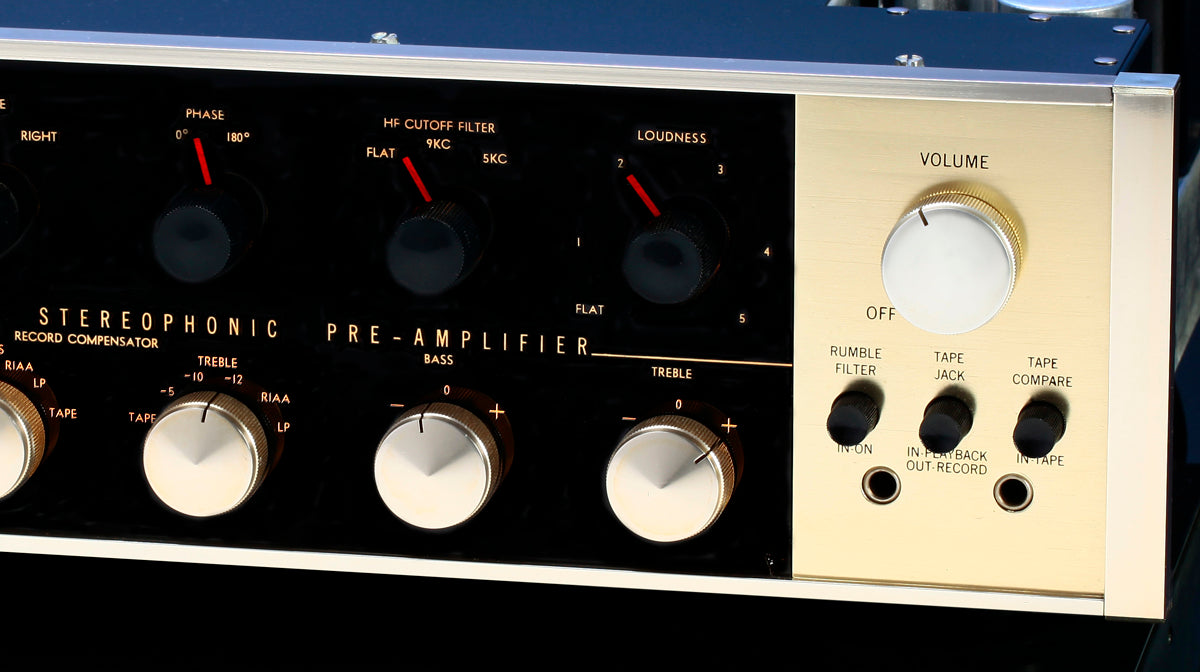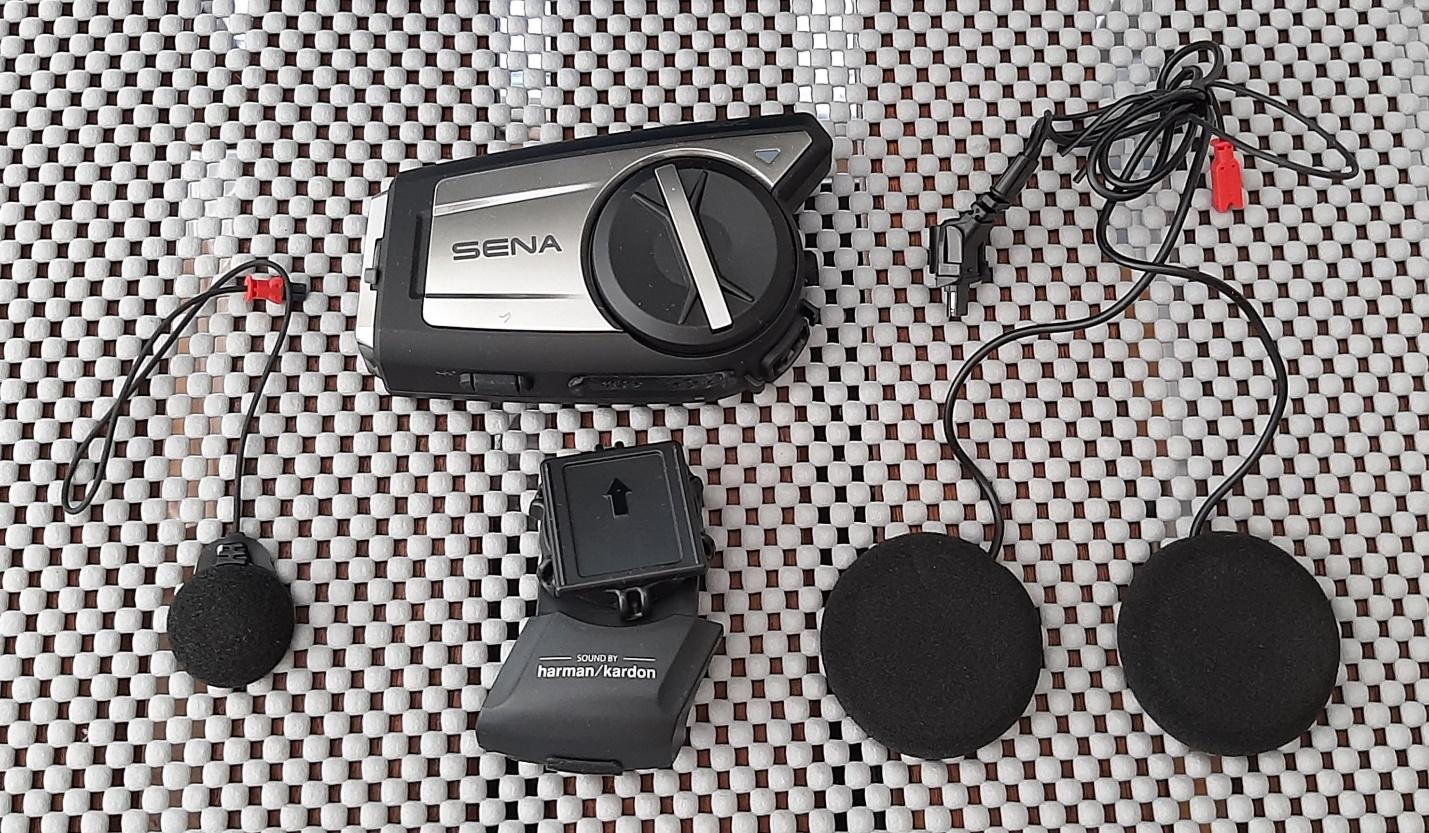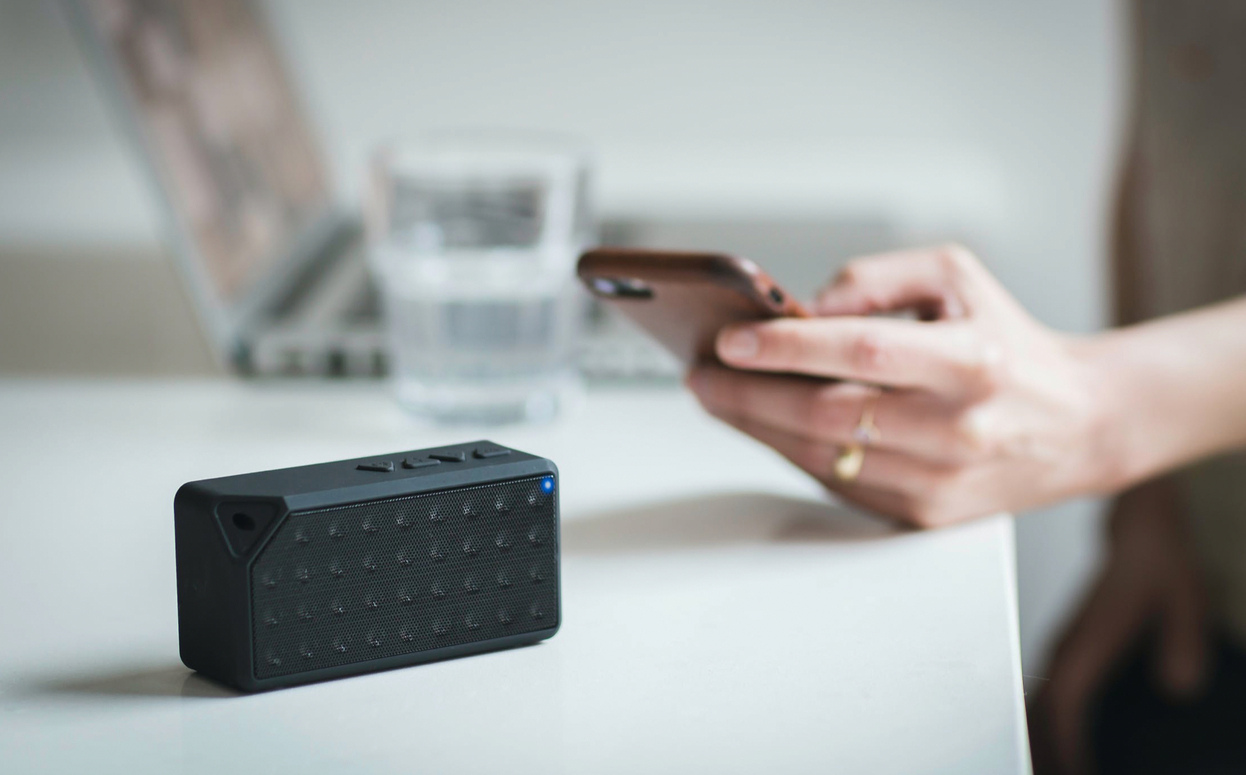Home>Devices & Equipment>Streaming>How To Know If My Music Is Loud Enough For Streaming


Streaming
How To Know If My Music Is Loud Enough For Streaming
Published: March 8, 2024
Learn how to ensure your music meets streaming volume standards with our expert tips. Find out if your audio is loud enough for streaming platforms.
(Many of the links in this article redirect to a specific reviewed product. Your purchase of these products through affiliate links helps to generate commission for AudioLover.com, at no extra cost. Learn more)
Table of Contents
Introduction
In today's digital age, music streaming has become the predominant mode of music consumption, revolutionizing the way we listen to our favorite tunes. Whether you're a budding musician, an aspiring producer, or an established artist, ensuring that your music is optimized for streaming platforms is crucial for reaching a wider audience and delivering an exceptional listening experience.
As a music creator, you may have pondered the question, "How do I know if my music is loud enough for streaming?" This query is not uncommon, as the loudness of your music directly impacts its presentation and impact on streaming platforms. Understanding the intricacies of streaming loudness standards, utilizing loudness meters and measurements, and making necessary adjustments are essential steps in ensuring that your music meets the requirements of popular streaming services.
In this comprehensive guide, we will delve into the intricacies of streaming loudness, providing you with valuable insights and practical tips to optimize your music for streaming platforms. By the end of this article, you will be equipped with the knowledge and tools necessary to confidently assess and enhance the loudness of your music, ultimately elevating its performance in the dynamic world of music streaming.
Understanding Streaming Loudness Standards
In the realm of music streaming, understanding the intricacies of streaming loudness standards is paramount for ensuring that your music is presented optimally across various platforms. Streaming services such as Spotify, Apple Music, and Tidal adhere to specific loudness normalization standards to deliver a consistent and enjoyable listening experience for their users.
One of the key concepts in streaming loudness standards is LUFS (Loudness Units Full Scale), which serves as a standardized measurement for audio loudness. LUFS provides a unified reference point for evaluating the loudness of audio content, allowing streaming platforms to maintain a balanced playback volume across different tracks. By adhering to LUFS guidelines, music creators can ensure that their compositions are perceived at an optimal volume level, avoiding jarring discrepancies between tracks.
It's important to note that excessive loudness can lead to audio distortion and listener fatigue, diminishing the overall quality of the listening experience. Streaming platforms employ loudness normalization to mitigate this issue, ensuring that all tracks are played back at a consistent perceived loudness level. This normalization process aims to preserve the dynamics and nuances of the music while preventing overly loud tracks from overshadowing others.
Furthermore, understanding the loudness targets set by different streaming services is crucial for tailoring your music to meet their specific requirements. For instance, Spotify recommends a target loudness of -14 LUFS, while Apple Music and Tidal adhere to a target of -16 LUFS. By aligning your music with these standards, you can optimize its presentation on each platform, enhancing its compatibility and appeal to a diverse audience.
By familiarizing yourself with streaming loudness standards and the underlying principles of loudness normalization, you can gain valuable insights into the technical aspects that shape the listening experience on popular streaming platforms. This knowledge forms the foundation for effectively optimizing your music to meet the stringent requirements of the digital streaming landscape, ultimately elevating its impact and resonance with listeners worldwide.
Using Loudness Meters and Measurements
In the realm of audio production, the utilization of loudness meters and measurements holds immense significance in ensuring that your music aligns with the prescribed streaming loudness standards. These tools provide invaluable insights into the loudness levels of your audio content, enabling you to make informed adjustments and optimizations for optimal streaming compatibility.
Loudness meters, often integrated into digital audio workstations (DAWs) or available as standalone plugins, offer real-time analysis of the perceived loudness of your music. By monitoring the LUFS levels displayed on these meters, you can gauge the relative loudness of your tracks and compare them against the recommended targets set by streaming platforms. This visual representation of loudness empowers you to identify potential discrepancies and take proactive measures to harmonize the loudness of your music with streaming standards.
When utilizing loudness meters, it's essential to consider the dynamic range of your music. While LUFS measurements provide a comprehensive overview of overall loudness, understanding the dynamic variations within your tracks is equally crucial. Dynamic range meters complement loudness meters by highlighting the contrast between the quietest and loudest parts of your music, shedding light on the intricacies of its sonic profile. By leveraging both loudness and dynamic range measurements, you can attain a holistic understanding of your music's loudness characteristics and refine them to align with streaming requirements.
In addition to real-time analysis, loudness measurements play a pivotal role in post-production mastering processes. By subjecting your music to thorough loudness analysis using specialized metering tools, you can pinpoint specific sections or elements that deviate from the desired loudness targets. This granular assessment enables you to apply targeted adjustments, such as dynamic range compression or equalization, to ensure that your music maintains a balanced and consistent loudness profile throughout its duration.
Furthermore, the utilization of loudness measurements facilitates the creation of multiple mix versions tailored for different playback scenarios. By analyzing the loudness characteristics of your music across various devices and environments, you can craft alternate mix versions optimized for headphone listening, car audio systems, or home stereos. This adaptive approach enhances the versatility of your music, ensuring that it resonates seamlessly across diverse listening contexts, thereby enriching the overall listening experience for your audience.
In essence, leveraging loudness meters and measurements empowers you to navigate the intricate landscape of streaming loudness with precision and finesse. By harnessing these tools to evaluate, refine, and customize the loudness of your music, you can elevate its compatibility with streaming platforms and captivate listeners with a meticulously crafted sonic journey.
Adjusting Your Music for Streaming Platforms
Once you have familiarized yourself with the nuances of streaming loudness standards and harnessed the power of loudness meters and measurements, the next pivotal step involves adjusting your music to align seamlessly with the requirements of streaming platforms. This process encompasses a series of strategic refinements aimed at optimizing the loudness and sonic characteristics of your music, ensuring its harmonious integration into the diverse ecosystem of digital streaming.
The first aspect to consider when adjusting your music for streaming platforms is the application of dynamic range processing. By delicately sculpting the dynamic range of your music through techniques such as compression and limiting, you can effectively manage its peaks and valleys, thereby enhancing its perceived loudness while preserving its inherent dynamics. This meticulous balancing act serves to prevent excessive loudness variations, ensuring that your music maintains a consistent and engaging sonic presence across different playback scenarios.
Furthermore, the judicious application of equalization (EQ) plays a pivotal role in refining the tonal balance and spectral characteristics of your music. By strategically shaping the frequency spectrum to optimize the clarity and impact of individual elements within your tracks, you can enhance their cohesiveness and presence on streaming platforms. This tailored EQ approach empowers you to address potential tonal imbalances and accentuate the sonic attributes that contribute to a captivating and immersive listening experience.
In addition to dynamic range processing and EQ adjustments, the strategic utilization of peak normalization can further augment the compatibility of your music with streaming platforms. By carefully calibrating the peak levels of your audio content to align with the specified targets of streaming services, you can mitigate the risk of unintended distortion while maximizing the utilization of the available headroom. This meticulous peak optimization ensures that your music remains faithful to its sonic integrity while adhering to the technical requisites of streaming platforms.
Moreover, the integration of metadata enrichment, encompassing detailed tagging and categorization of your music, enhances its discoverability and presentation on streaming platforms. By embedding comprehensive metadata, including artist information, genre classification, and album artwork, you can enrich the contextual framework of your music, facilitating seamless navigation and engagement for listeners across diverse streaming interfaces.
By meticulously implementing these adjustments, you can elevate the streaming compatibility and sonic allure of your music, positioning it for optimal resonance and impact in the dynamic realm of digital streaming. These strategic refinements not only align your music with the technical requisites of streaming platforms but also enrich its expressive depth and immersive appeal, fostering a compelling and captivating listening experience for audiences worldwide.
Testing Your Music on Different Devices and Platforms
After meticulously adjusting your music to meet the streaming loudness standards and optimizing its sonic characteristics, the next crucial phase involves comprehensive testing across a diverse array of devices and platforms. This pivotal step is instrumental in evaluating the adaptability and fidelity of your music across varying playback environments, ensuring that it resonates seamlessly and captivates listeners regardless of the chosen listening medium.
The process of testing your music on different devices and platforms encompasses a multifaceted approach aimed at assessing its sonic integrity, tonal balance, and overall presentation across a spectrum of playback scenarios. By subjecting your music to rigorous testing, you can gain valuable insights into its performance on smartphones, tablets, laptops, home audio systems, and automotive sound setups, among others.
When conducting device-specific testing, it's essential to consider the diverse audio playback capabilities and acoustic characteristics inherent to each device category. By immersing yourself in the sonic landscape of smartphones, for instance, you can evaluate how your music translates on compact, portable devices, ensuring that its sonic nuances and spatial dynamics remain perceptible and engaging in this prevalent listening context.
Similarly, testing your music on laptops and tablets enables you to gauge its adaptability to varying screen sizes and audio output configurations, ensuring that it delivers a compelling auditory experience across these prevalent platforms. Furthermore, assessing its performance on home audio systems and high-fidelity headphones allows you to ascertain its immersive potential in premium listening environments, where nuanced sonic details and spatial depth are paramount.
In addition to device-specific testing, evaluating your music across different streaming platforms is integral to comprehensively assessing its compatibility and presentation. By uploading your music to popular streaming services such as Spotify, Apple Music, Tidal, and Amazon Music, you can observe how it integrates into the platform's interface, metadata display, and recommended playlists, thereby refining its discoverability and engagement potential.
Furthermore, leveraging the insights gained from platform-specific testing empowers you to tailor your promotional strategies and audience engagement initiatives, aligning them with the unique user experiences offered by each streaming platform. This strategic approach enhances the visibility and accessibility of your music, fostering a cohesive and immersive presence across the dynamic landscape of digital streaming.
In essence, testing your music on different devices and platforms serves as a pivotal validation process, affirming its adaptability, resonance, and immersive allure across diverse listening contexts. By embracing this comprehensive testing paradigm, you can fortify the streaming compatibility and audience appeal of your music, positioning it for seamless integration and captivating engagement across the multifaceted realm of digital music consumption.
Conclusion
In conclusion, the landscape of music streaming presents a dynamic and multifaceted terrain, characterized by stringent loudness standards, diverse playback environments, and evolving user preferences. Navigating this intricate realm necessitates a comprehensive understanding of streaming loudness standards, coupled with strategic utilization of loudness meters, meticulous adjustments, and rigorous testing across varied devices and platforms.
By delving into the intricacies of streaming loudness standards, music creators gain invaluable insights into the technical requisites that shape the presentation and impact of their music on popular streaming platforms. The adoption of LUFS as a standardized measurement for audio loudness serves as a foundational reference point, enabling creators to align their music with the prescribed targets of streaming services while preserving its dynamic nuances and expressive depth.
The strategic utilization of loudness meters and measurements empowers music creators to embark on a journey of precision and refinement, enabling them to gauge the perceived loudness and dynamic range of their music with precision. This real-time analysis, coupled with post-production mastering processes, facilitates the crafting of music that resonates seamlessly across diverse listening contexts, enriching the auditory journey for listeners worldwide.
Furthermore, the process of adjusting music for streaming platforms encompasses a series of strategic refinements, including dynamic range processing, EQ adjustments, and peak optimization. These meticulous adjustments not only align music with the technical requisites of streaming platforms but also enrich its expressive depth and immersive appeal, fostering a compelling and captivating listening experience for audiences worldwide.
The comprehensive testing of music across different devices and platforms serves as a pivotal validation process, affirming its adaptability, resonance, and immersive allure across diverse listening contexts. By embracing this comprehensive testing paradigm, music creators fortify the streaming compatibility and audience appeal of their compositions, positioning them for seamless integration and captivating engagement across the multifaceted realm of digital music consumption.
In essence, the journey of optimizing music for streaming platforms transcends technical requisites, encompassing a harmonious fusion of artistry, technical precision, and audience-centric resonance. By embracing the principles of streaming loudness, leveraging advanced metering tools, and refining music with meticulous precision, creators can elevate their compositions to resonate seamlessly and captivate audiences in the vibrant and ever-evolving landscape of music streaming.











